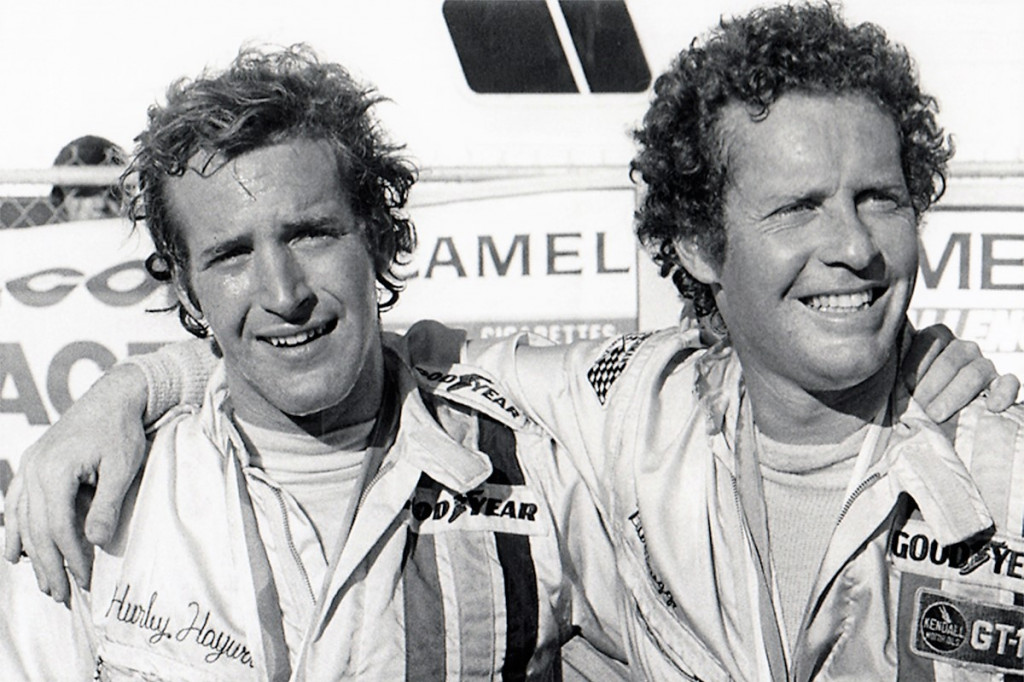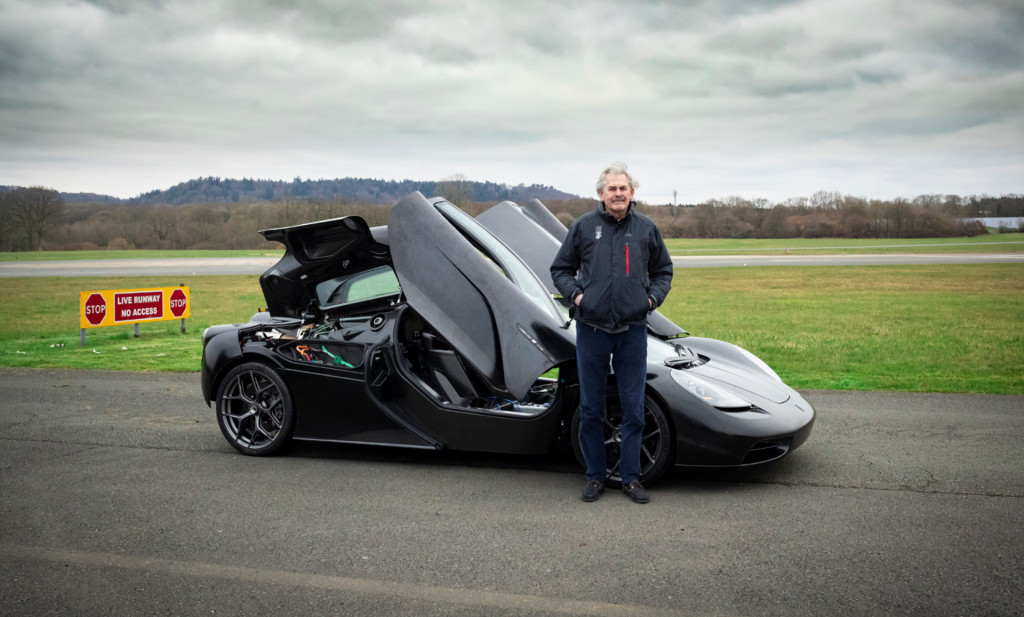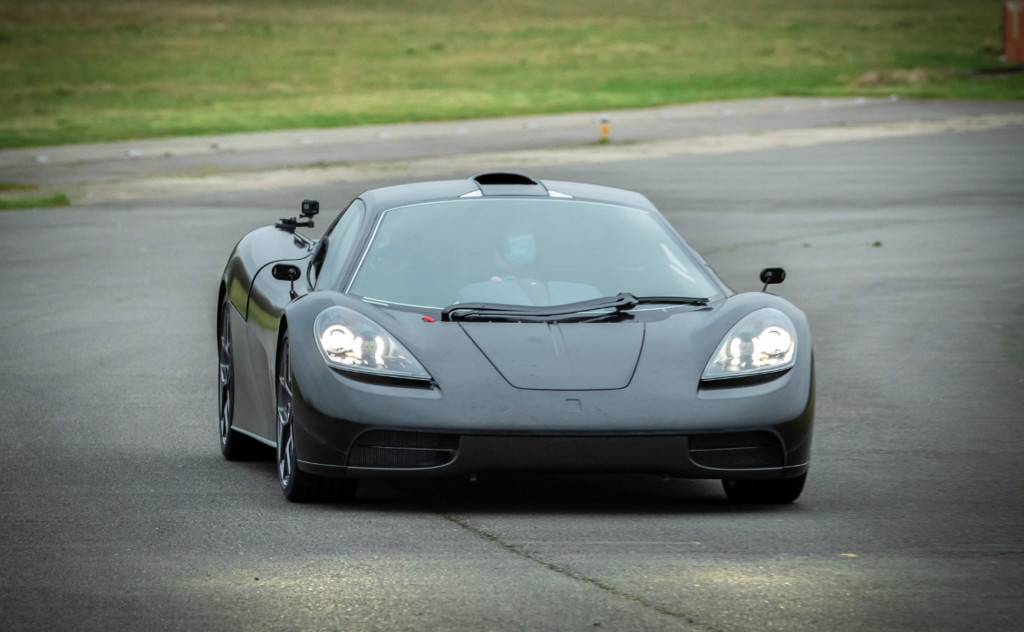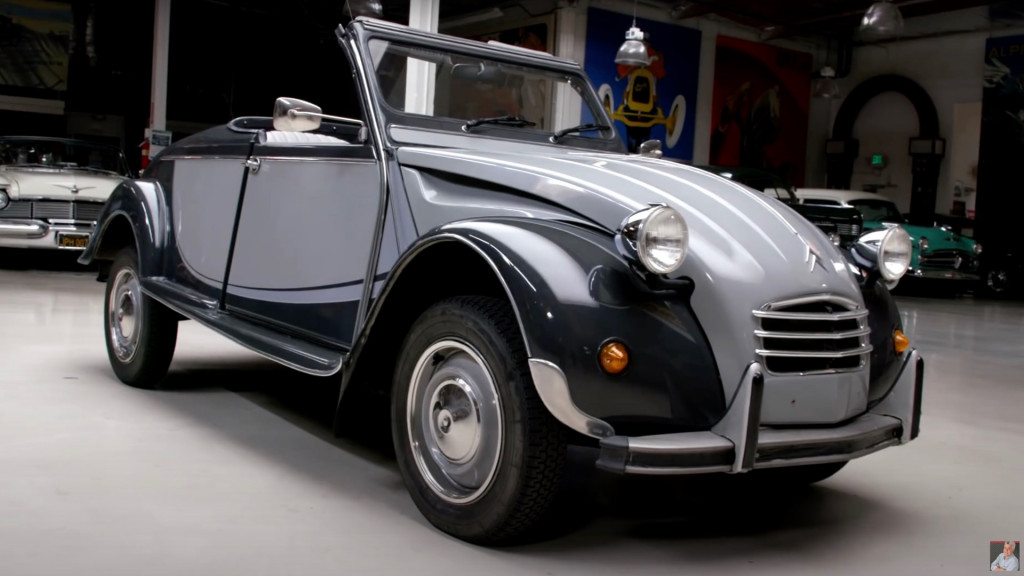Racing champion Hurley Haywood reflects on his half-century career in some of the world’s greatest Porsches in the latest installment of the Brumos Collection’s “Inside the 59” video series.
“Conversations with Hurley Haywood,” which has been posted on Brumos’ social channels, commemorates the 50th anniversary of his first championship, the 1971 IMSA title he earned with teammate Peter Gregg in a Porsche 914-6 GT.

Hurley Haywood (left) with Peter Gregg
Looking fit and ageless at 72, Haywood tells of his early days when, as an inexperienced youth, he was entrusted with driving for Brumos racing and immediately met with spectacular success.
“Racing against equipment that was much faster than ours, we won because of durability and planning,” Haywood says in the video. “This was my first year of racing, so it was quite a learning process.”
Two years later, he was behind the wheel of a mighty Porsche 917 in Can-Am competition.
“Switching from the 300-horsepower Porsche 914 to the 1,200-horsepower 917 was a huge leap for me, at only 24 years old and in just my third year of racing,” he says in the video, remembering the 917 for its “tremendous acceleration and huge downforce.”
“It was like being shot out of a cannon,” he recalls.
[embedded content]
Haywood, who was inducted to the Motorsports Hall of Fame in 2005, counts among his many victories five overall wins at the Rolex 24 at Daytona, three at the 24 Hours of Le Mans and two at the 12 Hours of Sebring. He earned the 1988 Trans-Am title, two IMSA GT Championships and 23 wins, three Norelco Cup championships, a SuperCar title and 18 IndyCar starts.
In the video, Haywood describes how his ability to master some rudimentary practices learned early on led to a historic life in motorsports.
“The most important thing a driver can do is focus on vision; your eyes tell your hands and feet what to do,” he says. “Patience is also extremely important. Racing is like chess: every move you make is calculated to a risk/reward. You have to learn how to evaluate a condition and make the proper adjustments to be successful.”
The iconic race cars that Haywood drove, as well as those of other Brumos drivers, are on display among the historic competition vehicles at the Brumos Collection’s huge display area, which opened to the public 14 months ago in Jacksonville, Florida.
“There is really no other facility that allows you to get so close to the cars that you can almost smell their heritage,” Haywood says in the video. “I’ve noticed that when people come into this building, they understand why Brumos is such a revered name, a standard bearer of excellence, and so critically important to the reason we’ve won so many championships.
This article, written by Bob Golfen, was originally published on ClassicCars.com, an editorial partner of Motor Authority.



